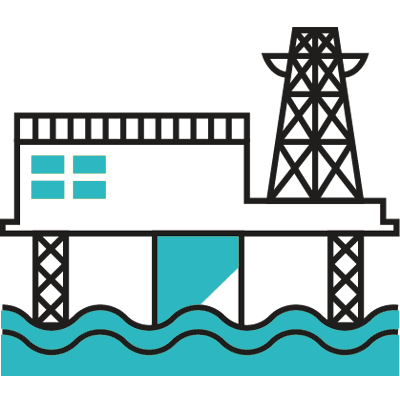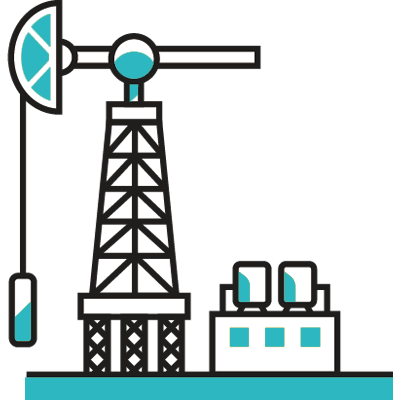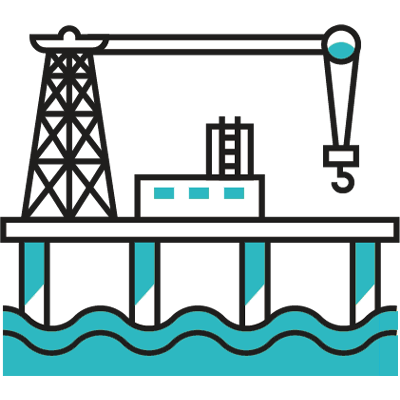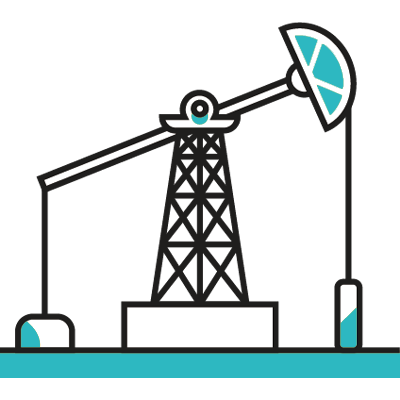



The petrochemical industry is the basic industry for the development of the national economy and a major consumer of energy. The main production processes are all completed by various pumps and air compressors. At present, most of these oil pumps, water pumps and air compressors are working in a constant speed state driven by electric motors. If we can change the majority of non-speed regulating motors to speed regulating operation so that their power consumptions would change with the loads, a great deal of energy can be saved, resulting in significant energy saving effects. According to incomplete statistics, in petrochemical enterprises of large and medium-sized, the capacities of squirrel-cage asynchronous motors account for 80% of the total capacity, which provides a broad space for the application of AC frequency conversion speed regulation system in petrochemical industry.

In petrochemical industry, the electricity consumption of fans, pumps and compressors used in oil refining production accounts for 90% of its total electricity consumption, of which 2/3 are operated under variable load conditions, and the average power saving rate is 52% by frequency conversion speed regulation. According to the survey, the electricity cost of fans and pumps in refineries has accounted for 10% of the refining cost. In addition, there are more than 10,000 HV and HP fans, pumps and compressors used in the logistics and transportation of high-pressure polyethylene, various gases and liquids in the national petrochemical industry. The voltage is mostly 6KV, and the unit capacity is 200-5,900 kW. The energy-saving payback period of normal voltage motor with frequency conversion speed regulation is 1.8-2.2 years on average. If HV motor is properly converted into LV motor and MV motor with different voltages according to its capacity, it is convenient to popularize frequency conversion energy-saving technology, and the energy-saving potential is about 3 billion kWh.
The applications of frequency conversion speed regulation in petroleum exploitation industry are mainly applied to main pipeline pump, oil pumping machine, molecular sieve pump, media pump, extruder, circulating pump, injection pump, mud pump, boiler feed pump, electric submersible pump, salt water pump, fan, scale-descaling pump, etc.
The petrochemical production process is a typical process with obvious continuity, and its production medium is mainly fluid (gas and liquid). These production fluid media need to be pressurized, depressurized, heated and cooled for chemical reactions, heat and mass transfer and other processes from one device to another, from one set of devices to another. These mass fluid transportation and processes constitute the basic unit operations of the process. The fan, water pump and compressor that undertake the task of fluid transportation are configured according to the technological needs. Therefore, fans and pumps are used in large scale and wide range in chemical enterprises.

Oil drilling rig is an important equipment for oil extraction. Drilling rigs used to have diesel generator sets, AC power grid powered and DC driven drilling rigs. At present, AC converter drilling rigs have become the new type of electric drive rigs, which have many advantages that DC rigs cannot compare with, and are the trend of future development of oil drilling rigs.
The task of oil production is to extract crude oil from the reservoir to the ground to the maximum extent, and the oil well is the channel connecting the reservoir with the ground. Generally, there are two methods of oil recovery: self-injection oil recovery (using the internal energy of the oil field) and artificial lift oil recovery (using external energy) or mechanical oil recovery. Given the lack of natural energy in most of our oil fields, the self-injection oil recovery is rare. Therefore, two kinds of pumping machines are used to work: reciprocating pumping machines with rod pumps (also known as kowtow pumping machines) and underground submerged centrifugal electric pumping machines.

Frequency conversion pumping machine, the drive motor is powered by a frequency converter, and there is no need for mechanical gear shifting and regulation process. If the pumping machine with frequency conversion speed regulation is adopted, the pumping volume of the deep-well pump can be adjusted by adjusting the motor speed steplessly and smoothly. There is no need to stop and replace the belt pulley, nor to change the stroke of the piston of the deep well pump, and it is also possible to achieve soft starting of the motor. Due to the use of frequency conversion speed regulation system, the pumping machine can dynamically adapt to the change of oil well load, and the parameters can be conveniently adjusted to achieve the most economical control. At the same time, its soft start performance is good, which can prolong the life of pumping machine and reduce the maintenance cost.
During regulation of the electric submersible pump of the frequency converter, because the oil well is several kilometers deep and the distance between the frequency converter and the motor is also several kilometers, so the output waveform of the frequency converter is required to be sine wave, and the smaller the harmonic, the better. Otherwise, the line voltage drop is very large, and the motor has no output torque and cannot drag the load. Generally, it is appropriate to use the perfect harmonic-free and multi-levelled converter with power unit connected in series.

When regulating the speed of water injection pump station in oilfield by frequency conversion, the outlet pressure and flow rate of water injection pump can be regulated smoothly and steplessly. The control system can supply water with "constant pressure" or "constant flow". This can save energy by eliminating the way of adopting regulating valve, which was previously used.
In addition, the frequency converter can also be applied in oil and gas gathering and transportation stations in oil fields. The crude oil or natural gas collected from each well in the oilfield will be sent to the oilfield gathering and transmission station for treatment. The crude oil (or natural gas) and its associated organisms from each well are collected, separated, measured and then gathered and transported to the treatment station. The oil, gas and water are separated and purified, dosed, dewatered, discharged, as well as boiler steam heated, domestic hot water and other processes, and the crude oil and natural gas that meet the specified quality standards are then concentrated and shipped.
Stay connected
Be the first to know about our new product launches, latest blog posts and more. The production base of Schorch Electric Co., Ltd. is located in Suining City, Sichuan Province. It adopts the advanced technologies and manufacturing techniques of Europe. The production technologies are advanced, stable and reliable.
The production base of Schorch Electric Co., Ltd. is located in Suining City, Sichuan Province. It adopts the advanced technologies and manufacturing techniques of Europe. The production technologies are advanced, stable and reliable.
Any question or request?
Click below, we’ll be happy to assist. Contact us